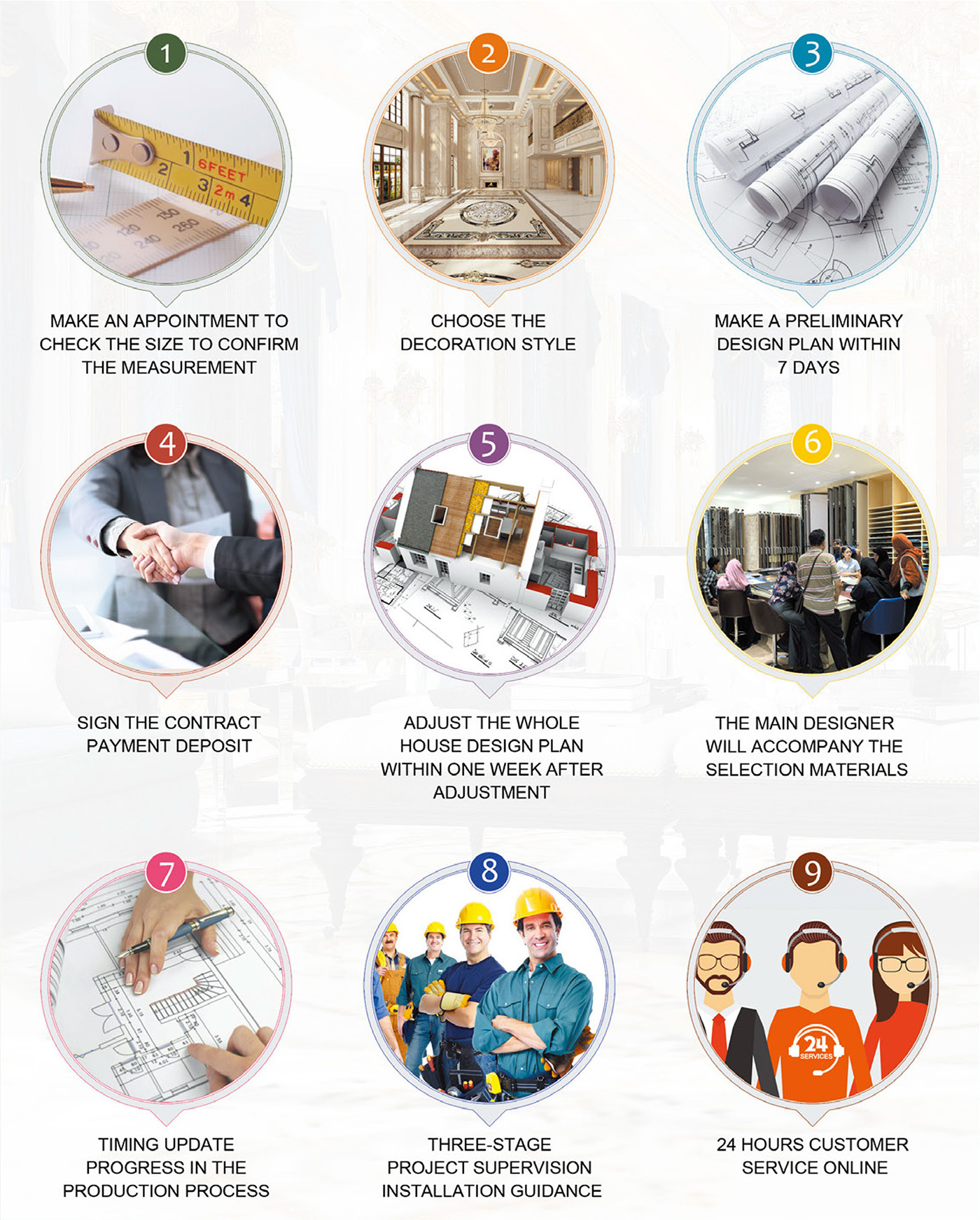About Us
Service Process

Step 1: Initial Consultation
Objective: Understand the client's needs, preferences, and goals.
- Schedule a meeting with the client to discuss their vision, style preferences, budget, and timeline.
- Collect information about the space, including dimensions, existing furniture, and functionality requirements.
- Discuss potential challenges and unique requirements, such as sustainability or specific materials.
Step 2: Site Analysis
Objective: Assess the physical space to create a practical design plan.
- Visit the location to take measurements and analyze the layout.
- Evaluate architectural elements, lighting conditions, and structural limitations.
- Document the space with photographs and notes for reference.
Step 3: Concept Development
Objective: Present the initial vision and design ideas to the client.
- Develop mood boards, sketches, and sample layouts based on the client’s preferences.
- Choose a design theme (e.g., modern, minimalist, luxury).
- Suggest a color palette, materials, and key furniture pieces.
- Present the initial concept to the client for feedback and revisions.
Step 4: Design Proposal
Objective: Create a comprehensive design plan.
- Provide detailed 2D layouts and 3D renderings of the proposed design.
- Include furniture placement, lighting plans, and decor elements.
- Provide material samples (e.g., fabrics, paints, tiles) for client approval.
- Prepare a project estimate, including a budget breakdown and timeline.
Step 5: Client Approval
Objective: Finalize the design and obtain client consent.
- Incorporate client feedback into the final design plan.
- Confirm the selection of materials, furniture, and accessories.
- Obtain signed approval to proceed with implementation.
Step 6: Procurement and Coordination
Objective: Source and prepare materials for project execution.
- Order furniture, materials, and accessories from suppliers.
- Coordinate with contractors, carpenters, and other professionals.
- Track deliveries to ensure everything arrives on time and as specified.
Step 7: Implementation
Objective: Bring the design to life.
- Begin construction or renovation, following the approved design plan.
- Oversee installations, including lighting, furniture placement, and decor.
- Conduct quality checks to ensure the work meets design specifications.
Step 8: Styling and Final Touches
Objective: Complete the space with finishing details.
- Arrange decor items, wall art, and accessories.
- Ensure proper lighting and ambiance as per the design theme.
- Conduct a thorough cleanup for a polished presentation.
Step 9: Client Handover
Objective: Present the finished project to the client.
- Walk the client through the completed space, explaining key design elements.
- Provide maintenance tips for materials and furniture.
- Address any minor adjustments or touch-ups needed.
Step 10: Follow-Up
Objective: Ensure long-term client satisfaction.
- Check in with the client after a few weeks to address any issues.
- Offer additional services, such as seasonal updates or ongoing consultations.
Key Considerations
- Communication: Keep the client informed at every stage.
- Budget Management: Ensure transparency in costs and avoid unexpected expenses.
- Sustainability: Offer eco-friendly materials and energy-efficient designs if requested.
- Customization: Tailor the process to suit the project’s scale and complexity.









